
Relative Clause Definition and Examples of Relative Clauses
A relative clause is a clause that usually modifies a noun or noun phrase and is introduced by a relative pronoun ( which, that, who, whom, whose ), a relative adverb ( where, when, why ), or a zero relative. Also known as an adjective clause, an adjectival clause, and a relative construction .
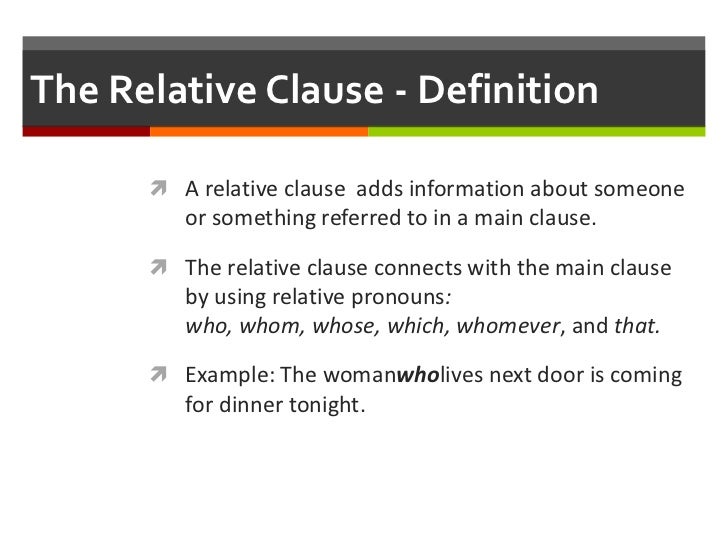
Relative clauses
Defining relative clauses: 1: The relative pronoun is the subject: First, let's consider when the relative pronoun is the subject of a defining relative clause. We can use 'who', 'which' or 'that'. We use 'who' for people and 'which' for things. We can use 'that' for people or things.

Relative Clause Definition and Examples of Relative Clauses • 7ESL
Relative Clauses. Relative clauses, also known as adjective or attributive clauses, are a type of complex sentence in English grammar. The two main types are defining and non-defining relative clauses. They will start with a relative pronoun or a relative adverb. We can also reduce relative clauses into present or past participle phrases.
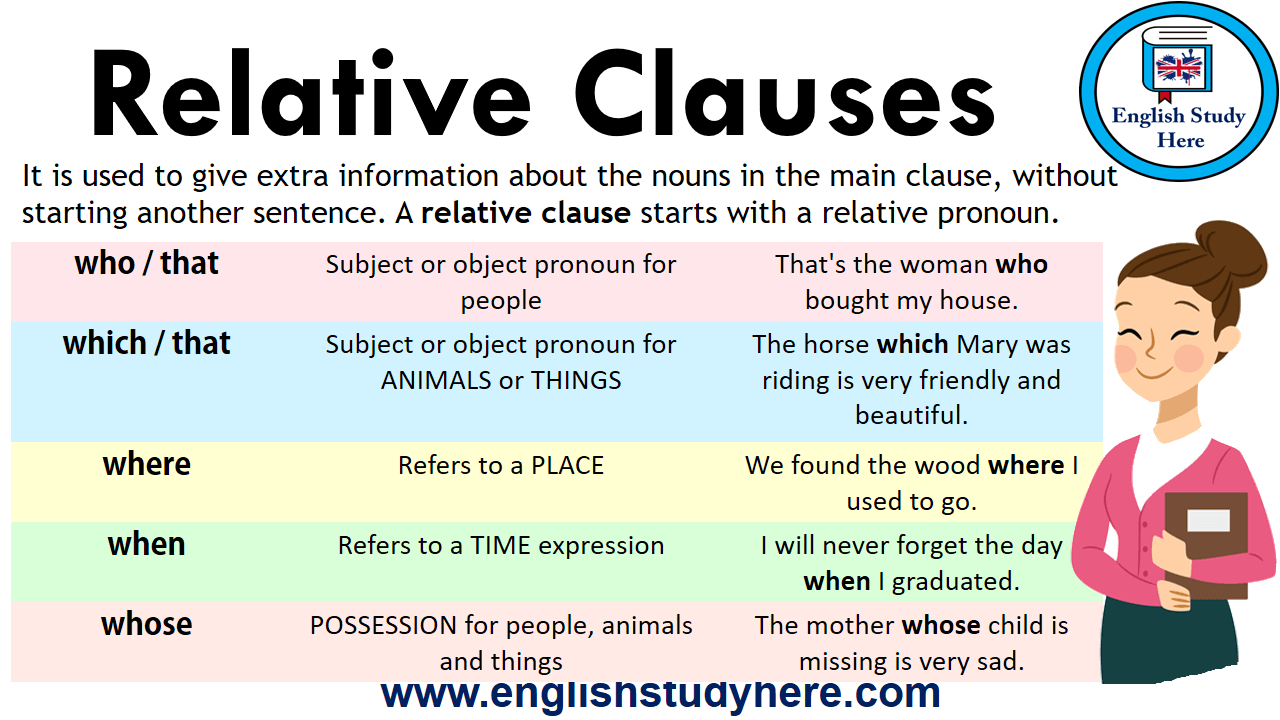
Relative Clauses 928 plays Quizizz
Relative clauses Grammar > Words, sentences and clauses > Relative clauses Relative clauses give us more information about someone or something. We can use relative clauses to combine clauses without repeating information.

Relative Clauses Defining and Nondefining My Lingua Academy
part of a sentence that cannot exist independently and describes a noun that comes before it in the main part of the sentence: In the sentence "The woman whom I met was wearing a brown hat ," "whom I met " is a relative clause. Fewer examples In the sentence 'The restaurant that we went to has closed ', 'that we went to' is a relative clause.
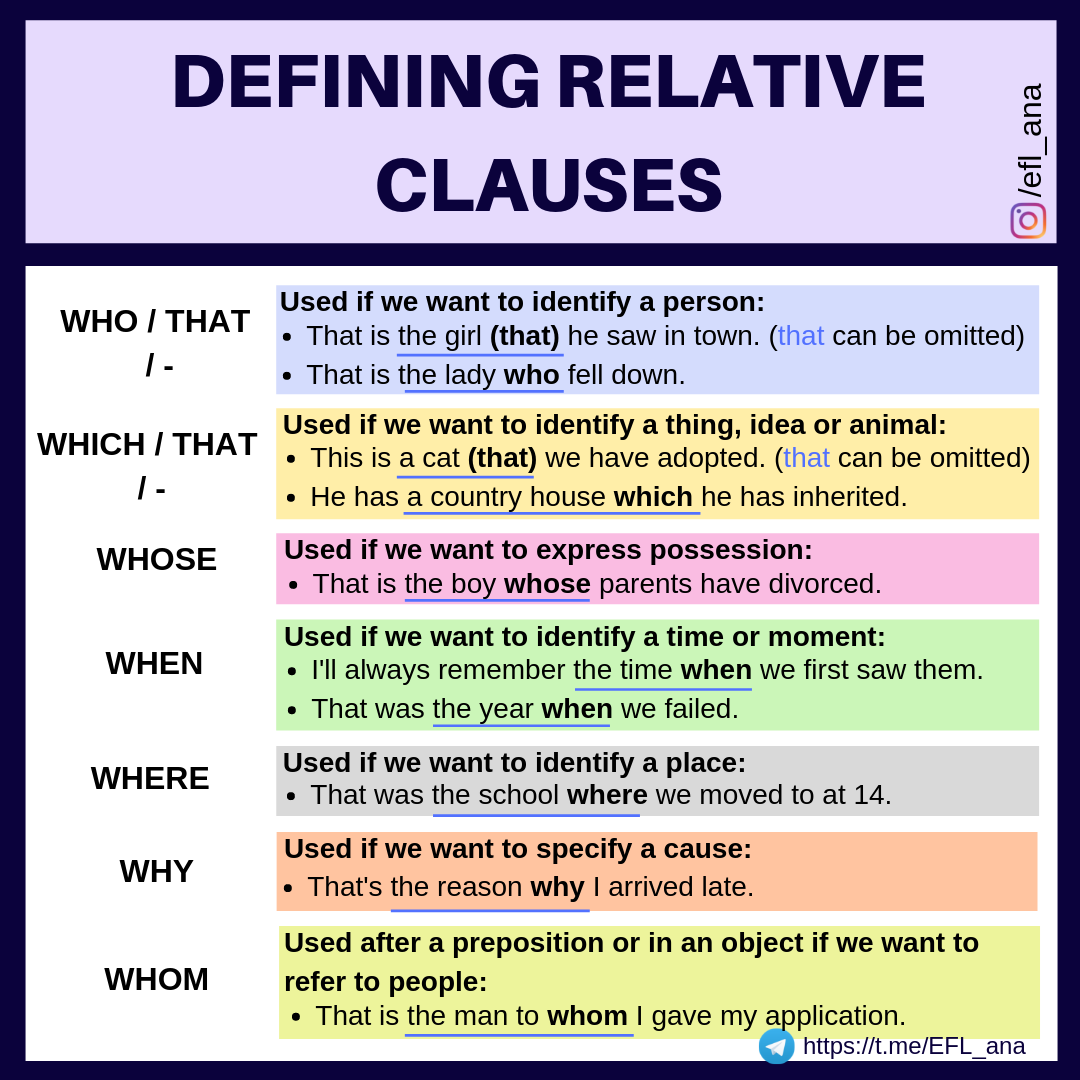
Ana's ESL blog Defining relative clauses
The defining relative clause gives us that. As the name suggests, defining relative clauses give essential information to define or identify the person or thing we are talking about. Take for example the sentence: Dogs that like cats are very unusual. In this sentence we understand that there are many dogs in the world, but we are only talking.

Pin on English Grammar
Relative clauses are dependent clauses that give the reader more information about another noun in the sentence. For example: The unicorn possessed magical powers, which could heal the sick. In this sentence, the relative clause which could heal the sick modifies the subject, unicorn, by identifying which magical powers it possessed.

Pin on Grammar
What is a relative clause? A relative clause is one kind of dependent clause. It has a subject and verb, but can't stand alone as a sentence. It is sometimes called an "adjective clause" because it functions like an adjective—it gives more information about a noun.

Relative Pronouns Definition Rules And Useful Examples Esl Grammar
Relative Clause. This is a clause that generally modifies a noun or a noun phrase and is often introduced by a relative pronoun (which, that, who, whom, whose).A relative clause connects ideas by using pronouns that relate to something previously mentioned and allows the writer to combine two independent clauses into one sentence. A relative clause is also known as an adjective clause.
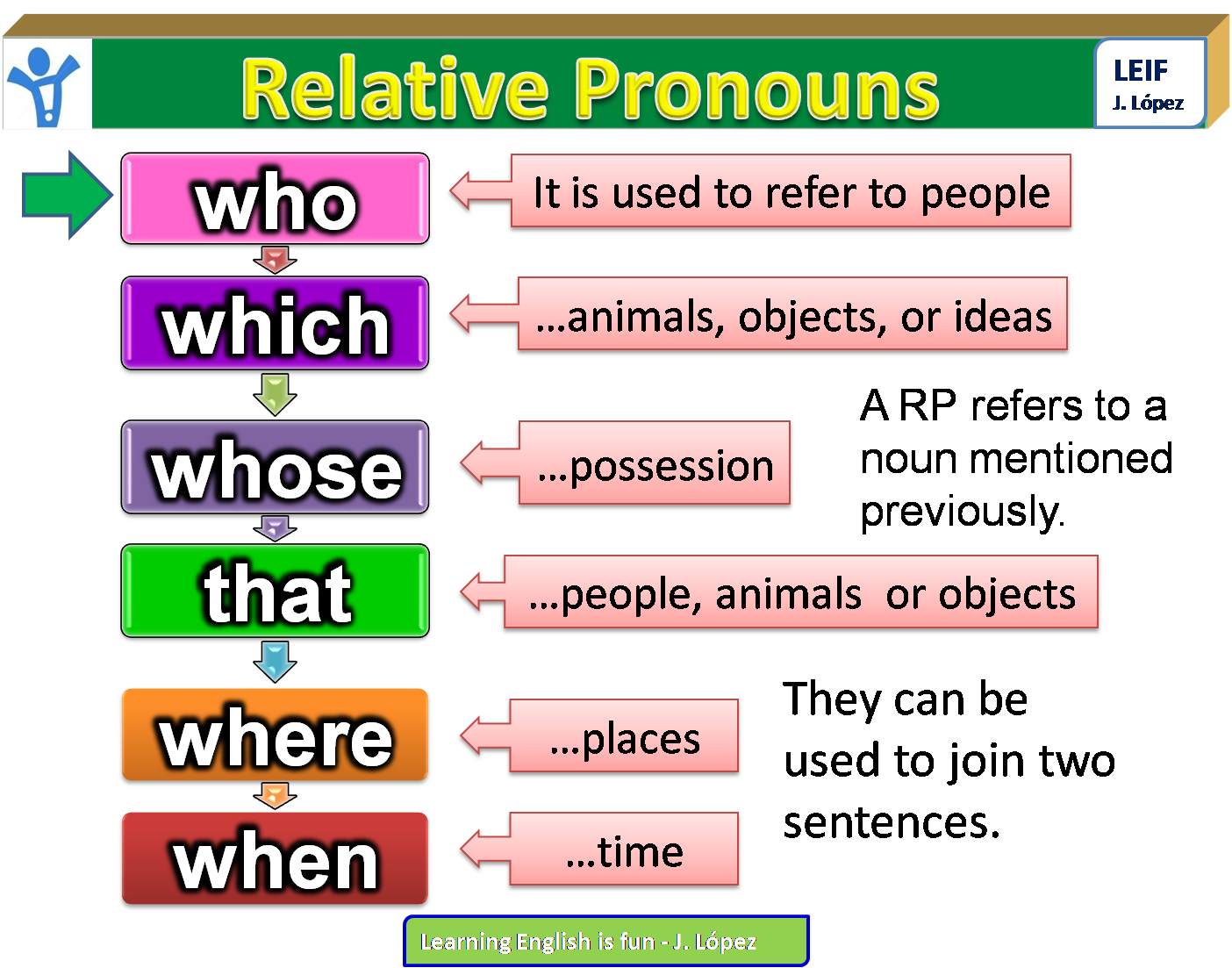
RELATIVE CLAUSES
Relative clauses. A relative pronoun is a word like "that" or "which" or "who", so a relative clause is a clause that begins with a relative pronoun. In the sentence "The dragon who breathed blue fire has retired," "who breathed blue fire" is a relative clause. Learn more about these constructions by watching the video!

Relative Clauses / Examples Of Relative Clause Sentences By Position
What is a Relative Clause? A relative clause is a type that modifies a word, phrase, or idea in the sentence. These clauses are usually introduced by a relative pronoun, such as which, who, whom, whose, and that. Some examples of clauses of this type include which I got, whose book she lost, and that Rosie gave.

Relative clauses online presentation
What is a relative clause? A relative clause can be used to give additional information about a noun. They are introduced by a relative pronoun like 'that', 'which', 'who', 'whose',.
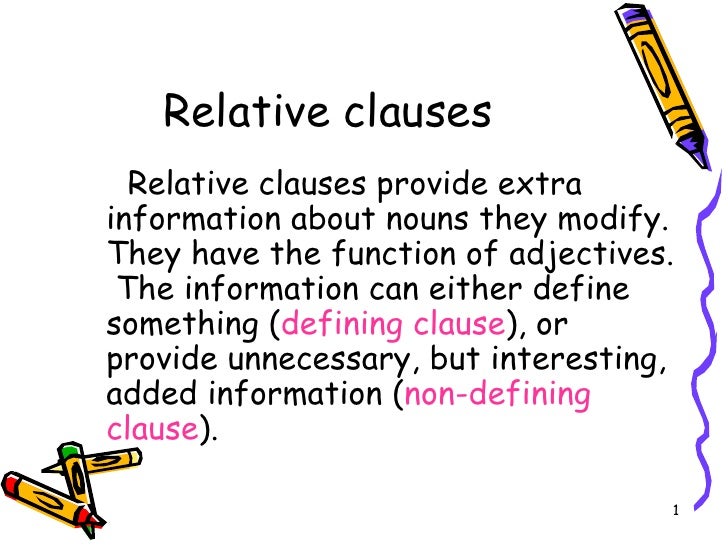
Relative clauses
A clause that modifies a noun in a sentence, or a noun phrase, is a relative clause. Example: The woman that has just left the shop didn't buy anything. ('that has just left the shop' modifies the noun 'woman' by telling us which woman the speaker is referring to) The use of relative pronouns in relatives clauses. There are two types of relative clauses using relative pronouns.
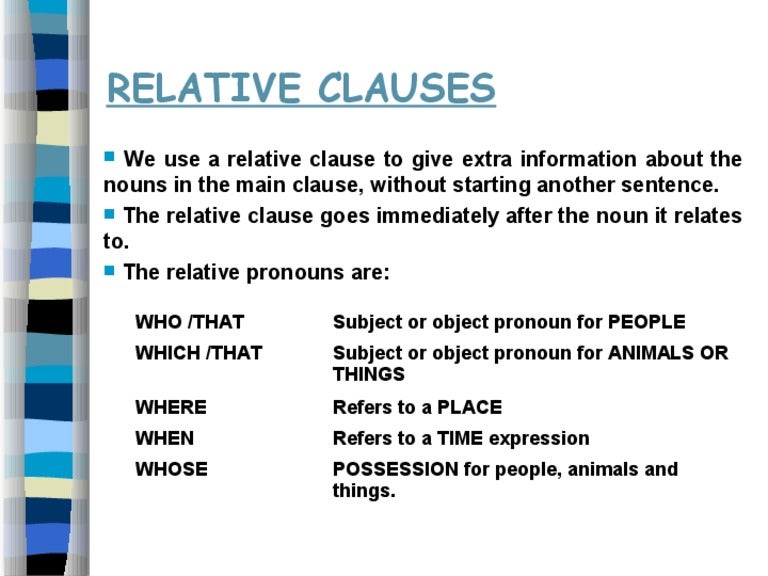
Relative clauses
Grammar Relative clauses Relative clauses give us more information about someone or something. We can use relative clauses to combine clauses without repeating information.. Types of relative clause
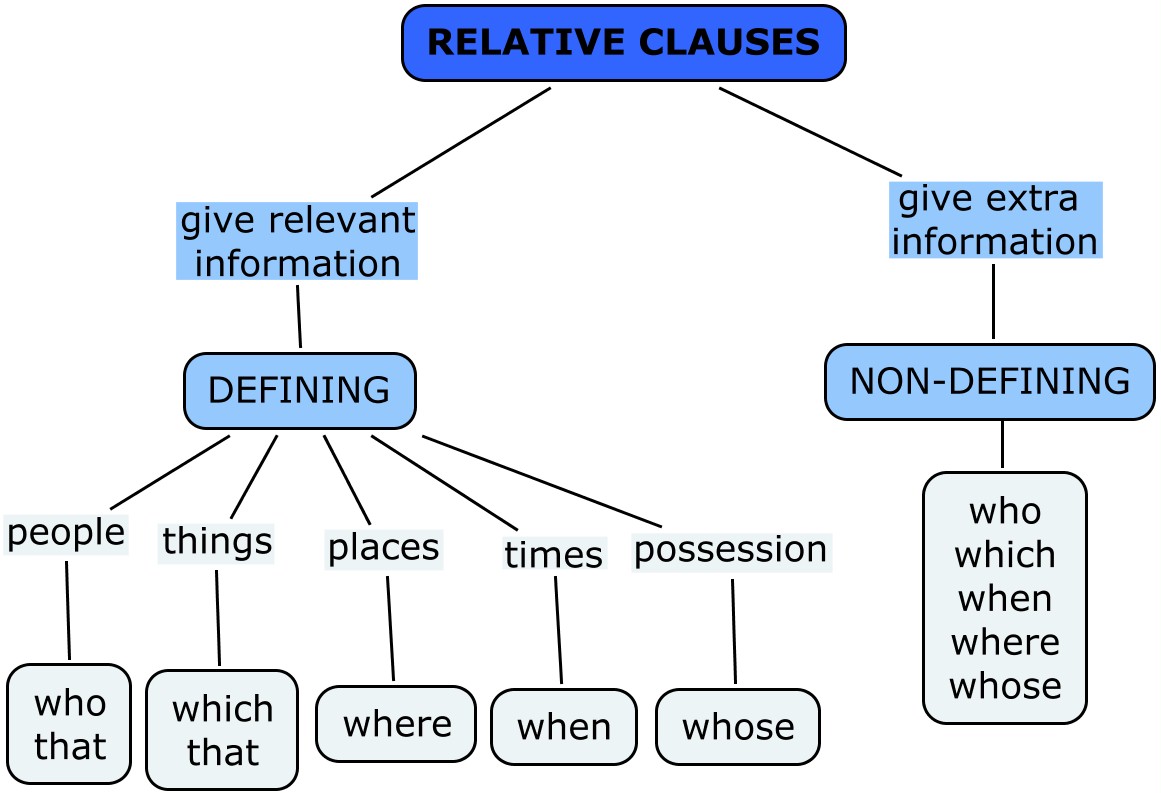
School doubts and education topics (Paradise) Relative clauses
Defining relative clauses We use defining relative clauses to give essential information about someone or something - information that we need in order to understand what or who is being referred to. A defining relative clause usually comes immediately after the noun it describes.
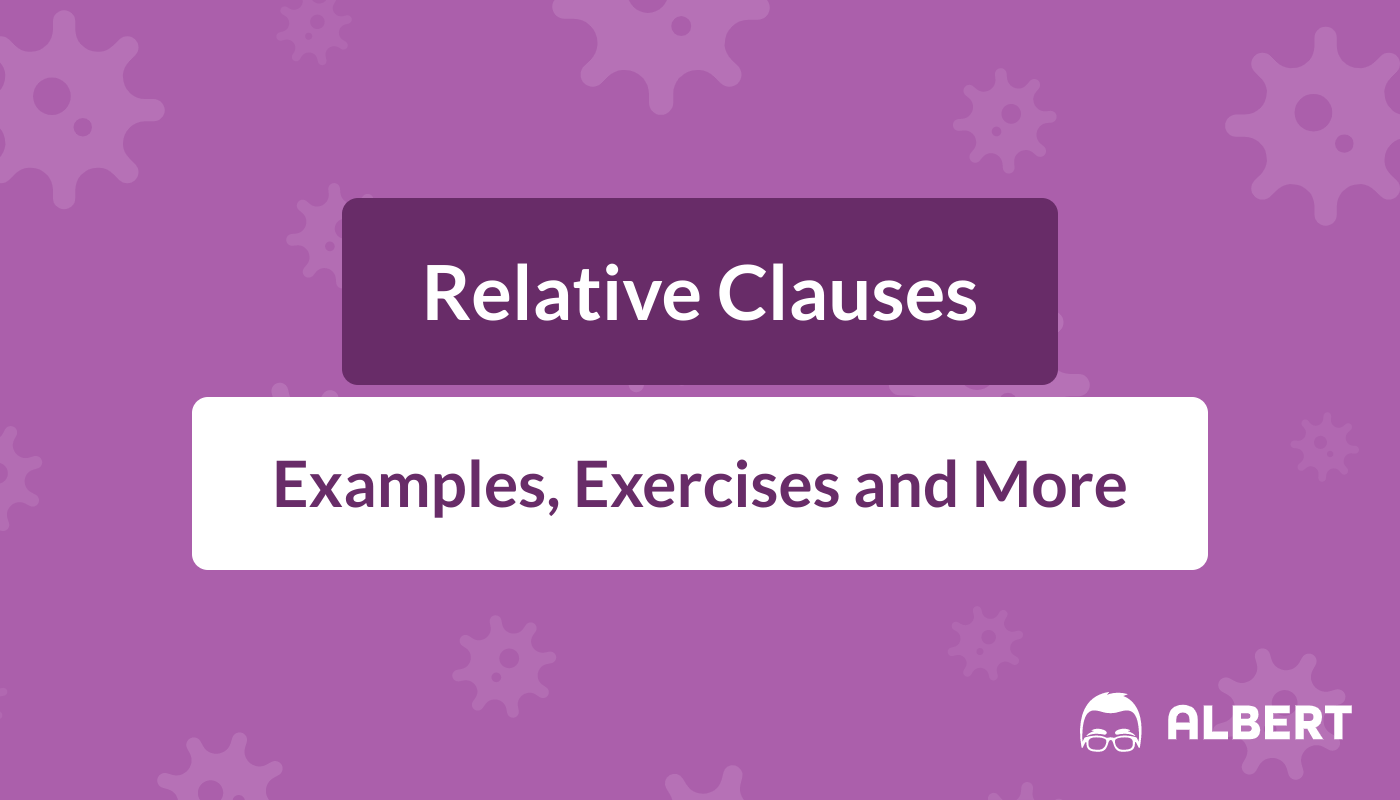
Relative Clauses Definition, Examples, & Exercises Albert.io
Definition of "Relative Clause" (with Examples) A relative clause is a multi-word adjective that includes a subject and a verb. For example: The nightingale that we fed last year has returned. (The relative clause "that we fed last year" is functioning as an adjective describing "the nightingale."